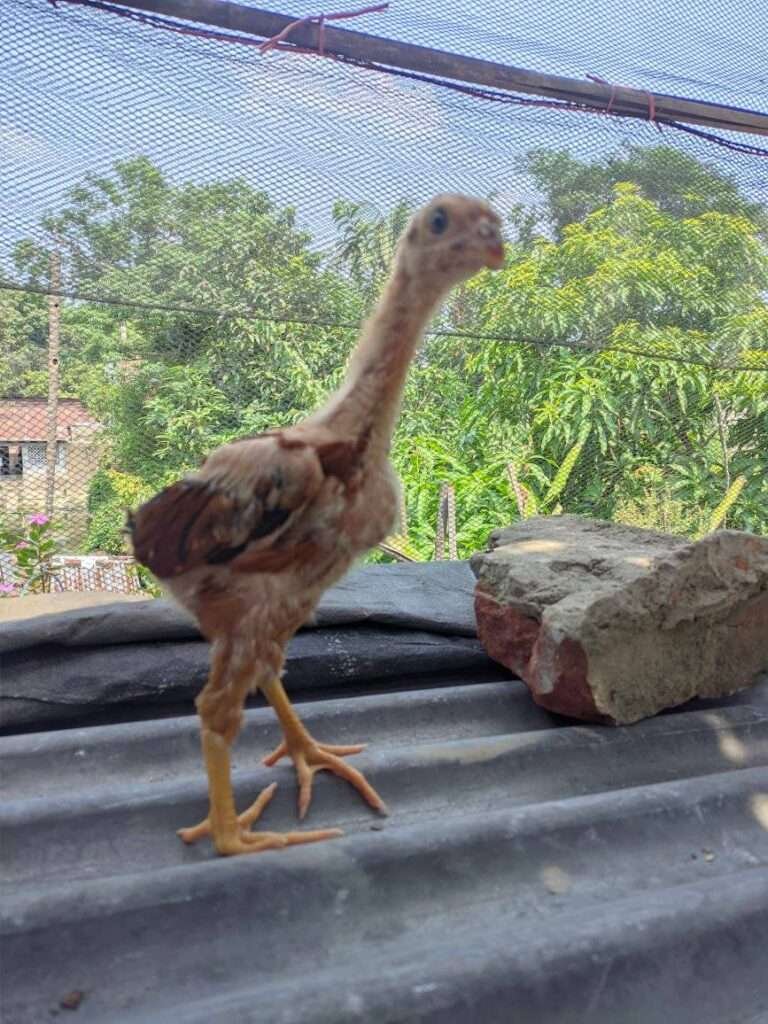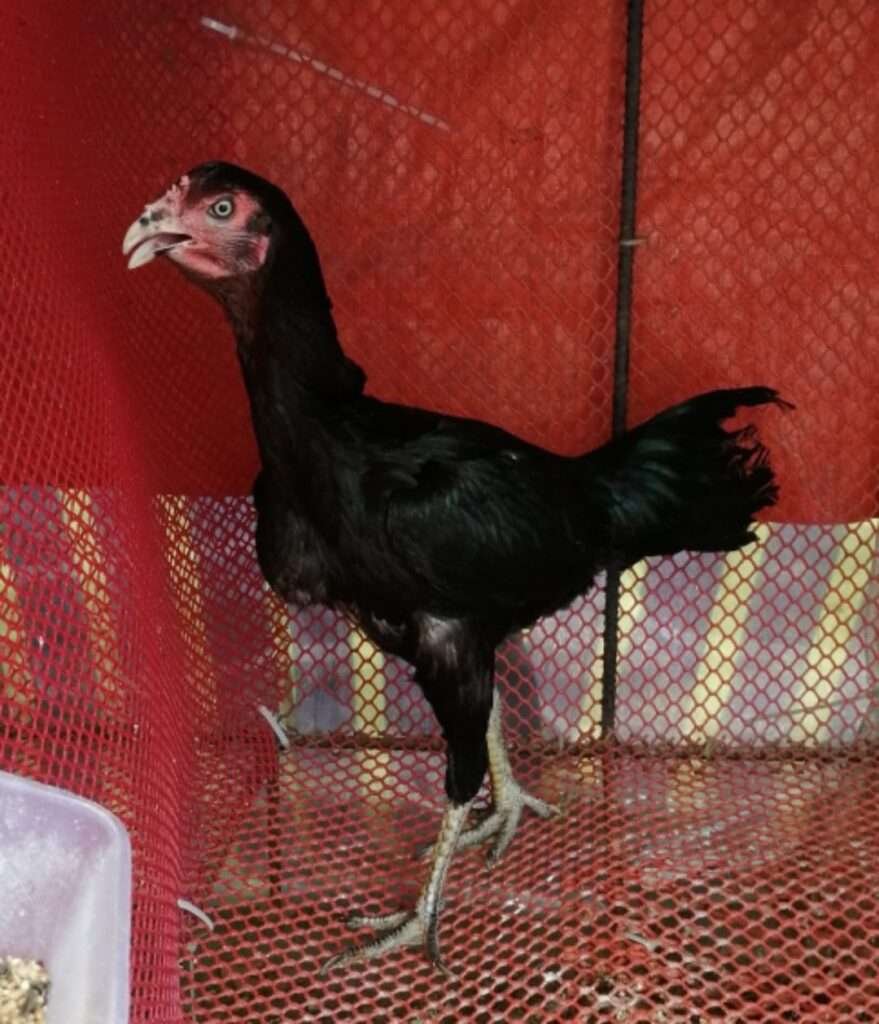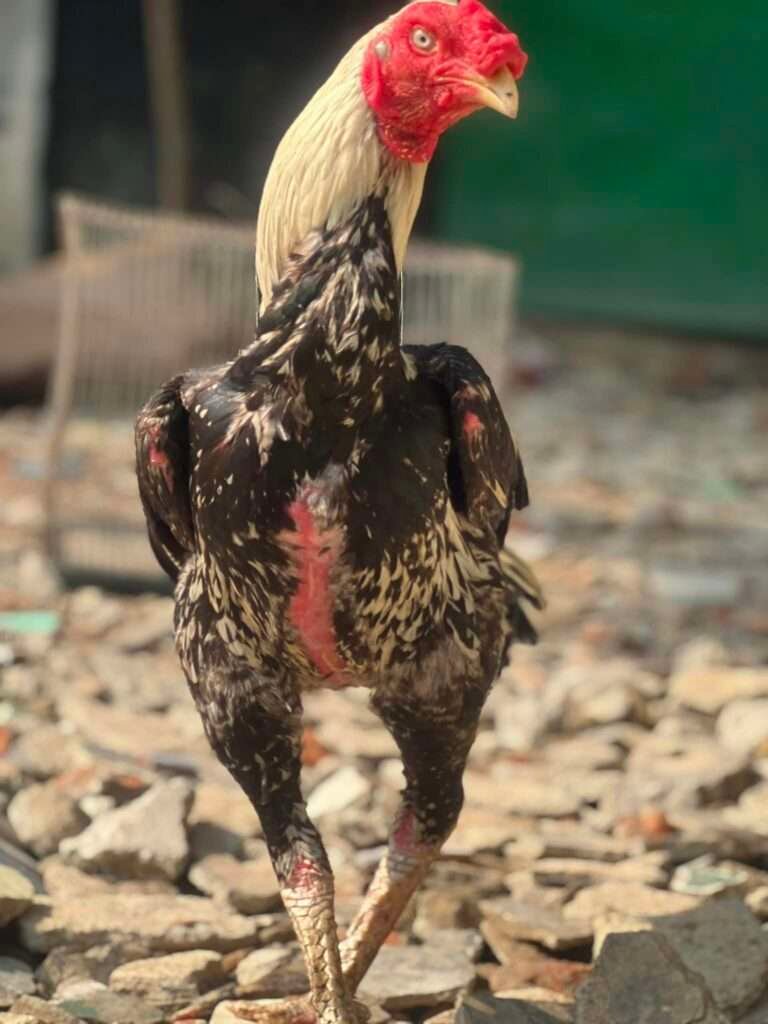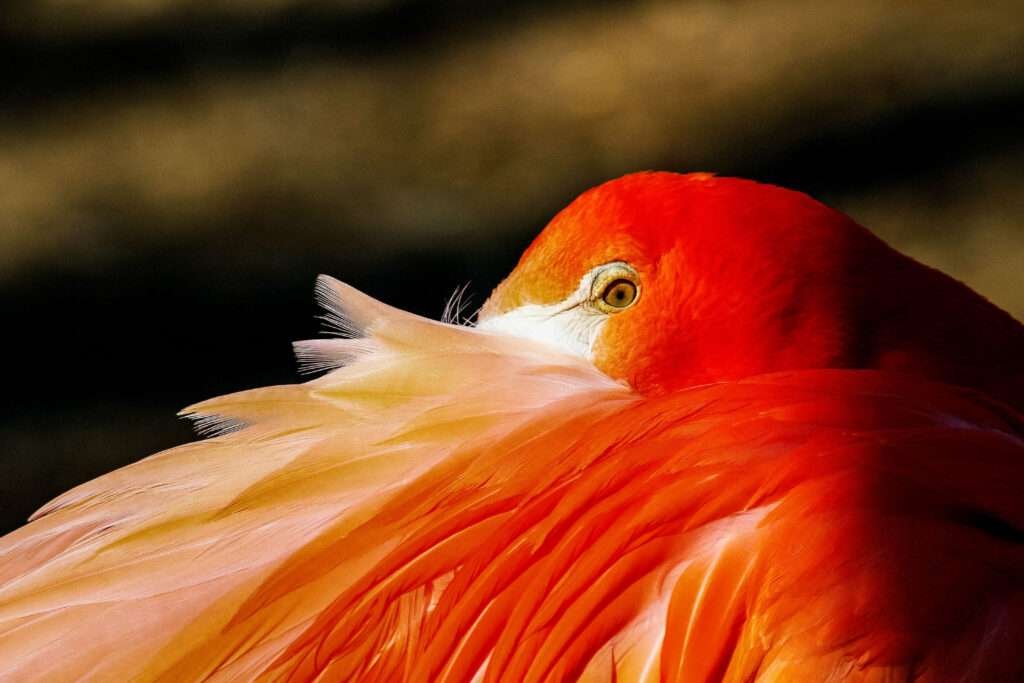Asil Chicken is a breed known for its strength and fighting prowess. Originating from India, this bird is highly esteemed in cockfighting circles.
The asil chicken, often referred to as the Aseel, boasts a distinct appearance with a short beak, compact body, and muscular build, making it instantly recognizable. This breed is prized not only for its combative skills but also for its unique aesthetic and cultural significance.
Breeders value Asils for their intelligence, courage, and high level of aggression, which are considered desirable traits in competitive arenas. Despite their fighting background, asil chickens are also kept for ornamental purposes and selective breeding, with enthusiasts appreciating their rich history and the variety of colours they come in. Their hardiness and adaptability to various climates make them a popular choice for poultry enthusiasts around the world.
Table of Contents
ToggleAsil Chicken Origins
Exploring the Asil Chicken reveals a rich tapestry of history and unique characteristics. This breed is not just any ordinary chicken; it’s a symbol of heritage and strength.

Historical Background
The Asil Chicken, often called Aseel, originates from India. This breed has been around for centuries, known for its prowess in bird fighting. Ancient texts and artworks suggest its presence as early as the 12th century. The Asil played a significant role in rural Indian culture.
Distinctive Traits
The Asil Chicken stands out with its striking appearance and robust physique. Here are some key traits:
- Body: Compact and muscular with a distinctive upright stance.
- Head: Small with a unique curved beak.
- Eyes: Piercing and alert.
- Feathers: Thick and tight to the body, providing a sleek look.
- Temperament: Fierce yet protective of its territory.
These features make the Asil Chicken a fascinating study in poultry breeds.

Assessing Breeding Goals
When entering the world of asil chicken breeding, clear goals pave the way to success. It’s more than just mating chickens. Breeders must understand the purpose and set achievable targets. This ensures the lineage thrives, boasting desired traits. Let’s explore the key aspects of breeding these majestic birds.
Purpose Of Breeding
Breeding asil chickens serves various purposes. Some breeders aim for stronger fighters, while others may seek to enhance beauty or resilience. Knowing the purpose guides the selection process and ensures breeders pair the best matches.
- Preservation: Protecting the pure Asil lineage.
- Competition: Training for strength in fighting arenas.
- Show Quality: Enhancing features for exhibition.
- Utility: Improving health and productivity.
Setting Realistic Expectations
Realistic goals are essential in Asil Chicken breeding. Not all chickens will meet every expectation. Success requires patience and time. Breeders must recognize the limits and work within them.
| Goal | Expectation | Time Frame |
|---|---|---|
| Fighting Ability | Incremental improvements | Multiple generations |
| Show Traits | Visible features in offspring | 1-2 generations |
| Health | Better resistance to disease | Ongoing effort |
Each breeding cycle offers lessons. Breeders learn and adapt their strategies. This constant evolution brings them closer to their goals.
Selecting Your Breeding Stock
Starting a flock of Asil chickens requires careful selection of breeding stock. This choice shapes the health, temperament, and quality of your birds. Let’s explore the key factors to consider when choosing your Asil breeding stock.
Criteria For Selection
- Physical Health: Look for birds with clear eyes, smooth feathers, and robust frames.
- Temperament: Choose calm and manageable birds for easier handling.
- Age: Ideal breeders are typically between 6 to 18 months old.
- Productivity: Select hens with a consistent laying history.
- Body Type: Birds should match the Asil breed standard in shape and size.

Understanding Genetics
Genetics play a crucial role in Asil chicken breeding. They determine traits like colour, size, and behaviour.
| Trait | Genetic Consideration |
|---|---|
| Colour | Study colour patterns and select desired shades. |
| Size | Pair birds to achieve a balanced size in offspring. |
| Behaviour | Aim for a gentle disposition through selective breeding. |
Understanding these genetic principles supports informed decisions and healthier chickens.
Creating The Right Environment
Creating the right environment for Asil Chickens is vital for their health and happiness. These majestic birds need a habitat that matches their unique needs. A proper setup ensures they thrive and showcase their impressive characteristics.
Housing Requirements
Spacious and secure housing is crucial for Asil Chickens. They are active and require room to move freely. Their coop must protect against predators and harsh weather conditions. Adequate ventilation keeps the air fresh and prevents respiratory issues.
- Minimum space: 4 square feet per bird inside the coop.
- Outdoor access: 8-10 square feet in a run or fenced area.
- Perches: Sturdy and elevated spots for roosting.
- Nesting boxes: One for every 3-4 hens for egg-laying privacy.
Diet And Nutrition
The diet of Asil Chickens must be nutrient-rich to support their muscular build. A balance of proteins, vitamins, and minerals aids in their overall well-being. Fresh water must be available at all times.
| Age | Food Type | Frequency |
|---|---|---|
| Chicks (0-8 weeks) | Starter crumbles | Free-choice |
| Youngsters (8-20 weeks) | Grower feed | 2-3 times/day |
| Adults (20+ weeks) | Layer pellets | 2 times/day |
Supplement their diet with grains, vegetables, and occasional treats like mealworms. Avoid overfeeding to prevent health issues.
Breeding Best Practices
Asil Chicken enthusiasts strive for strong, healthy birds. Proper breeding methods are key to achieving this. This section covers timing, mating strategies, and health monitoring to improve fertility and vigour in Asil Chickens.
Timing And Mating Strategies
Choosing the right time for breeding asil chickens is crucial. Breeders should aim for early spring, which allows chicks to grow in warmer months. Select mature, healthy birds for mating. A common ratio is one rooster for every five hens, which ensures effective mating without overworking the rooster.
- Spring is the best season for breeding.
- Use birds that are at least one year old.
- Maintain a 1:5 ratio of roosters to hens.
Monitoring Health And Fertility
Health and fertility are vital for successful breeding. Breeders should have regular check-ups with a vet and observe their chickens daily. Look for signs of illness or distress. Healthy birds have bright eyes and active behaviour. Fertility can be checked by examining eggs for fertility marks.
| Daily Checks | Signs of Good Health | Fertility Indicators |
|---|---|---|
| Behaviour | Bright eyes | Fertility marks on eggs |
| Feathers | Active | Regular egg-laying |
| Appetite | Clean feathers | Clear egg whites |
Remember to record each bird’s health status. This helps identify breeding patterns and potential issues early on. Use a health log for each bird.
Incubation Techniques
Incubation is a critical step in raising Asil chickens. Proper incubation techniques can make or break the success of hatching these magnificent birds. Whether you’re an experienced breeder or just starting out, understanding the best practices for incubating Asil chicken eggs is essential. Let’s delve into the methods and controls that can help ensure a healthy hatch.
Natural Vs. Artificial Incubation
Natural incubation relies on the hen to do the work. Asil hens are known for their strong mothering instincts. They keep eggs warm and turn them regularly. Yet, some breeders prefer artificial incubation. This method uses machines called incubators. They offer more control over the environment. Below is a comparison of both techniques:
| Method | Pros | Cons |
|---|---|---|
| Natural Incubation | No equipment is needed. Hens do the work. | Less control over conditions. Space is limited by the hen’s size. |
| Artificial Incubation | Full control over temperature and humidity. Can hatch more eggs at once. | Requires monitoring and equipment. Power outages can be risky. |
Temperature And Humidity Control
The right temperature and humidity are vital for Asil chicken eggs. For the first 18 days, eggs need a temperature of 99.5°F (37.5°C) and humidity of around 40-50%. In the last three days, increase humidity to 65-75%. Use a reliable incubator to manage these conditions. Check the settings daily to avoid any issues.
- Day 1-18: Keep temperature at 99.5°F and humidity at 40-50%.
- Day 19-21: Increase humidity to 65-75%.
Remember to turn eggs at least three times a day. This prevents the embryo from sticking to the shell. Stop turning on day 18 to allow the chick to position for hatching.
Following these guidelines can create an optimal environment for your Asil chicken eggs. This will lead to a successful hatch and a new generation of these proud and ancient birds.
Chick Rearing Tips
Raising Asil chicks demands careful attention. This guide provides essential tips to help them thrive. From brooding setups to growth milestones, we’ve got your back. Let’s ensure these robust birds reach their full potential.
Brooding Setups
Brooding is critical in the first weeks of a chick’s life. Provide a warm and safe environment for the chicks. Use a brooder lamp to maintain a temperature of 95 degrees Fahrenheit for the first week. Lower the temperature by 5 degrees each subsequent week until it matches the outside temperature.
- Space: Ensure sufficient space for chicks to move. Crowding can lead to stress and disease.
- Bedding: Use clean, absorbent materials like pine shavings. Change bedding regularly to keep it dry.
- Feeder and Waterer: Keep food and water accessible. Clean these daily to prevent contamination.
Growth Milestones
Asil chicks grow quickly and hit key milestones that indicate proper development. Monitor these signs to track their progress.
| Age (weeks) | Milestone |
|---|---|
| 1-5 | Rapid growth, start feathering |
| 6-10 | Increased feed, more feathers |
| 11-15 | Nearing adult-size, full feathers |
| 16+ | Transition to adult diet, begin training |
Weight checks and behaviour observations help gauge chick health. Watch for active, alert birds with steady growth. Consult a vet if growth seems slow or irregular.

Common Challenges In Asil Breeding
Asil chicken breeding presents unique hurdles. These birds are known for their strength and beauty. Yet, breeders often face difficulties, especially with aggression and inbreeding. Understanding these challenges is key to successful Asil breeding.
Dealing With Aggression
Asil chickens are naturally aggressive, which can be a problem for breeders. This trait often leads to injuries among the flock, so breeders must take steps to manage this behaviour.
- Provide spacious environments to reduce stress.
- Separate highly aggressive birds to avoid fights.
- Use barriers to prevent visual contact between aggressive birds.
Regular monitoring is essential. It helps identify aggressive birds early. This prevents harm to other chickens.
Preventing Inbreeding
Inbreeding can weaken Asil chicken lines, often leading to health problems and reduced vigour. Breeders must work to maintain genetic diversity.
- Introduce new birds from different lines regularly.
- Keep accurate breeding records to track genetics.
- Plan matings carefully to avoid close relatives breeding.
Genetic diversity is crucial. It ensures strong, healthy Asil chickens for generations. Breeders must prioritize it in their breeding programs.
Record-keeping For Success
Record-keeping for Success is a vital part of raising Asil Chickens. Keeping detailed records helps breeders track the growth, health, and breeding patterns of their flock. This practice ensures informed decisions and improves the overall quality of the breed.
Importance Of Documentation
Good records serve as a history for each bird. They show which hens lay the most eggs and which roosters are the strongest. By documenting these details, breeders create a blueprint for the future success of their Asil chickens.
- Track lineage to maintain pure bloodlines.
- Monitor growth for healthy development.
- Identify patterns in behaviour and health.
- Improve breeding strategies over time.
Tools And Methods
Breeders use various tools to keep records. Some prefer digital spreadsheets, while others use traditional notebooks. The best tool is the one that works for you and is consistently used.
| Tool | Benefits |
|---|---|
| Notebooks | Portable, no need for power |
| Spreadsheets | Easy to organize, quick to update |
| Apps | Accessible from anywhere, often free |
Remember to back up digital records. Losing data can be a step back in your breeding program. Regular backups ensure you keep all the important information safe.
Ethical Considerations
When discussing Asil Chickens, it’s crucial to consider ethical factors. These include animal welfare and the impact on biodiversity. Understanding these helps in making responsible decisions.
Animal Welfare
Asil Chickens are known for their resilience and unique appearance. Yet, their well-being is often a concern.
- Proper Care: They need enough space, clean water, and a nutritious diet.
- Health Management: Regular check-ups prevent diseases.
- Stress Reduction: Gentle handling reduces stress, promoting better health.
Conservation And Biodiversity
Preserving Asil Chickens also aids biodiversity.
| Aspect | Importance |
|---|---|
| Genetic Diversity | They add genetic variety to poultry populations. |
| Conservation Efforts | Supports survival of rare breeds. |
Frequently Asked Questions
Do Asil Chickens Lay Eggs?
Yes, Asil chickens do lay eggs, although their production is lower compared to other breeds. Typically, they produce about 40 to 50 eggs per year.
What Are The Top 5 Aseel Breeds?
The top five Aseel breeds include the Reza, Amroha, Sindhi, Mianwali, and Java Aseel.
How Do You Identify Asil Chicken?
To identify an Asil chicken, observe its tall, upright posture, strong muscular build, distinctive curved beak, and thick neck. Check for tight feathering and a small pea comb. These traits are characteristic of the Asil breed.
What Are The Benefits Of Aseel Chicken?
Aseel chickens are known for their robust health, high-quality meat, impressive muscle development, and strong disease resistance, making them a favoured breed among poultry enthusiasts.
Conclusion
Embracing the Asil chicken’s rich heritage offers poultry enthusiasts a unique journey. With striking features and a storied past, these birds truly stand apart. The Asil promises to enrich your flock whether you’re a seasoned breeder or new to the coop. Explore the robust world of Asil chickens and discover a legacy of strength and beauty.




